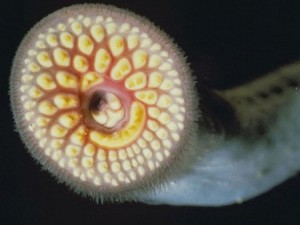Scientists at Newcastle University are currently developing a tiny bio-inspired robot, just one centimeter in length, which in less than five years might be used to diagnose and pinpoint diseases from inside the human body.

The researchers, backed-up by the American National Science Foundation and the UK’s Engineering and Physical Sciences Research Council, are hoping to succeed where other scientists at nano labs across the world have been painstakingly trying to achieve as well – a working, safe tiny device which can swim through the blood stream and collect critical information, irretrievable otherwise.
Called the “Cyberplasm”, the Newcastle scientists’ take involvesa biomimicking robot that functions like a living creature loaded with sensors derived from animal cells, inspired by the sea lamprey, a creature found mainly in the Atlantic Ocean. The animal has an extremely nervous system, making it perfect for bio-mechanical mimicking.
“Nothing matches a living creature’s natural ability to see and smell its environment and therefore to collect data on what’s going on around it,” Dr Frankel noted.
Cyberplasm will have an electronic nervous system, ‘eye’ and ‘nose’ sensors derived from mammalian cells, and artificial muscles that use glucose as an energy source. Its sensors are being developed to respond to external stimuli, like chemical signals or light, much in the same way organisms do in nature by converting them into electronic impulses that are sent to an electronic ‘brain’ equipped with sophisticated microchips. This information will be then used by the brain to send electronic messages to artificial muscles, telling them to contract or relax, resulting in an undulating motion which propels the Cyberplasm and allows it to navigate through the human body. Data on the chemical make-up of the robot’s surroundings can be collected and stored for later recovery, information later used for diagnosis.
Besides disease diagnosis, the researchers believe the Cyberplasm might have some immediate applications in the prosthetics sector, where the tiny bio-robot might be used to stimulate living muscle tissue to contract and relax. The researchers are currently developing the components of Cyberplasm individually, and while the initial prototype will be one centimeter long, they’re confident they can scale it down to nano-size in time – a working device should be ready within five years.
“We’re currently developing and testing Cyberplasm’s individual components,” Frankel concluded. “We hope to get to the assembly stage within a couple of years. We believe Cyberplasm could start being used in real world situations within five years”.
University of Newcastle / Eureka Alert






